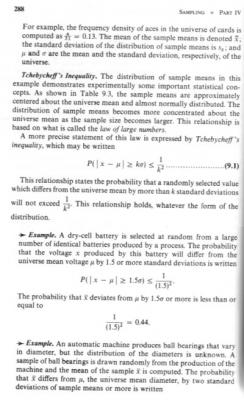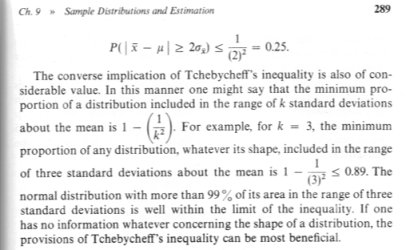-
Posts
17639 -
Joined
-
Last visited
-
Days Won
93
Content Type
Profiles
Forums
Events
Everything posted by studiot
-
Either it is a fact that the falsework is missing or it is not. It cannot also be a matter of belief. I offered you an alternative explanation, not base exclusively on ramps, that I'm willing to bet you had never considered before. I'm willing to bet that the Giza Construction plc woud have had all manner of prehistoric scaffolding, craneage, haulage lines and posts scattered around during construction and would have cleared it all up at the end. Here is another link to simple heavy materials handling in another industry (logging). Whilst skylines were probably beyond GizaCon some is basic and would have been available to them. http://www.fs.fed.us/rm/pubs/rmrs_gtr292/1974_studier.pdf You should study it along with the book about Smeaton (he used water) Incidentally why is all the falsework also missing from Stonehenge, Karnak, The Parthenon, The Blue Mosque, The Coliseum etc?
-
The Geometry of three dimensions. Two of the sets of p orbitals are sideways on and can form pi bonds (say py and pz) But that would leave the px orbitals facing end on as the bond is along the x axis.
-
I see no evidence of the constructuion method any more than I do in my quoted examples of later constructions.
-
I have given fuzzwood +1 for getting you to this stage. However you have not quite drawn the two sp hybrid orbitals quite correctly. For the situation we are talking about there are two number sp hybrid orbital per atom. The original p orbitals are symmetric about the origin, both lobes are equal. The sp hybrids are not. They have one large fat lobe sticking out to one side of the origin and one small tail lobe on the other side. The fat lobes form the bonds. Of the two in each atom One fat lobe sticks out to the left and one to the right (along the x axis) So the two overlapping fat lobes form a single bond along the x axis and the other bonding lobe for each atom sticks out on the other side of each atom (and therefore can easily bond to a hydrogen). The other two p orbitals per atom overlap sideways on and form 2 weaker pi bonds http://www.chemtube3d.com/orbitalsacetylene.htm also http://science.uvu.edu/ochem/index.php/alphabetical/g-h/hybridization/
-
For the reasons mentioned!!! The "ramps" point at the bottom of the pyramid. Also because they removed "ramps" (natural ground) even before construction began. I can't post a picture of it right now but the entire north and west sides of the second pyramid at Giza was extensively excavated far below bedrock even before the first stone went in. This was necessary because water had to be able to flow all around the pyramid before they could lift the first stone. That water flowed around it is established throughout the physical record but let's save this. I'm sorry I don't follow this response either. I didn't say they did or didn't use ramps. (I do know the Romans used them in their construction as in the siege of Masada http://en.wikipedia.org/wiki/Siege_of_Masada) But what do you mean by a ramp and what do you mean by pointing down or that they were removed before construction began? It is normal construction technique to this day to create a level 'formation' (the modern word) So what? As a matter of interest in the building of interlocking masonry structures in difficult circumstances by primitive methods, Smeaton's Tower is worth a read https://wordery.com/smeatons-tower-christopher-severn-9780954275099?currency=GBP>rck=VmREc2dBTE1tU1BtdG9BWSsxREF6UFpKV0YrQi9YQzdtbWYvSXdacjFYUnpDYXM0YzVhZnNPdVltU1hhbThrdUFVb2hWc24ycWFEYk1yMVU0ZXU3R2c9PQ&gclid=CJX83qjugcECFafnwgodsi0Aig
-
How would one stand on the top of something before it was built, in order to drag stones up it, to build it? Alternatively if it was already built why drag stones up it?
-
Indeed yes. In fact modern practice is to construct what is known as 'falsework' in order to build the permanent work. This is a bit like building a giant jig as a metalworker or carpenter might do to fabricate a door or some other work. The falsework is deliberately removed at the end of the construction, because no one want to see temporary support holding up the nice new bridge. How do we know that the ancient Pharoh's didn't also cause this to happen because all they wanted to see was pyramid? We know that the Egyptians, the Harappans and the Babylonians all used temporary works in their respective river management, but often left them in place afterwards, perhaps for the opposite reason ie these were utilitarian works not showpieces.
-
Cladking, Do you have any idea how the Clifton Suspension Bridge, The Maillart Elastic Line Bridges, The Forth Bridge, The Tay Bridge, the Kocher Valley Viaduct (amongst others) were built? And is there any on site evidence today of this? Oh and I have never called myself a scientist.
-
This is really annoying. I lost the entire post when I went to preview. Anyway I will try again. It really depends upon your point of view, either could be correct. Both Timo and John are correct, but they are making different points. Timo is saying that it depends upon your point of view. John is making the point that when considering (dividing it into regions of interest) the entire universal population set, you must be careful to avoid counting the boundary twice. Since John has presented the standard Chebychef inequality that includes equalities, the region of interest in the question should be denoted by strict inequalities when Chebychef is reversed. This is what I think your book has done. However many statisticians start with the reversed inequality, including the equality, so the strict inequalities will appear in the other region and the region of interest to your question will then be denoted by inequalities including equality and the outer region by strict inequalities. This is because the inner region is normally the one of interest. Here is an excerpt from my old textbook (Clark and Schkade 1969), who adopt this latter approach. The important thing is to be consistent when dividing up the universal population set into regions.
-
And yet your source does describe the use of shall and will as auxiliary verbs, but not go. The OED is quite clear that shall & will are in the present tense (should & would in the past) when used as auxiliarly verbs. (p2802 and p 3687 in my copy)
-
I have to observe that your reference source prostrates itself before the OED, since it manages 5 lines about the same word and does not seem to describe the use of go as an auxiliary verb at all.
-
But if you are not doing it right now you are not doing it period. I am just trying to show the shades and subtleties of meaning that can be expressed in English, using auxiliary verbs. "I do" can mean always, sometimes, once only or not at all. Separating time into three tenses just doesn't cut it.
-
Not according to the Oxford English. The word is the present tense of a verb, which has its roots in the Gothic 'skal' and the old Dutch 'zal' etc Will, it seems BTW, is also the present tense of an Old Gothic verb wilja, Old Dutch wil etc Thank you for getting me to look it up.
-
John, thank you for putting imatfaal's explanation into formal mathematical format. +1
-
with For comparison, I would say they can mean the exact opposite. I did..... often means "in the past I did (habitually), but I have stopped now and therefore will not do so in the future." Whereas I do.... implies continuation of the habit into the future. Since 'today' is Tuesday I cannot be travelling today (the present) so how can 'I do' be considered present? Surely it is an expression of what happened in the past and what will happen in the future only? Some auxiliary verbs are not used in all tenses eg "I used to travel" has no present or future tenses. Also we often require the context to complete or distinguish the meaning. Tricky no?
-
Remember that some auxiliary verbs take the infinitive: I do travel I did travel and some take the gerund I will be travelling I am travelling I was travelling The tense of 'I do travel' is interesting in the following sentence, said on a Tuesday. I do travel to Birmingham every Wednesday. Do it refer to the past or future (it cannot refer to the present can it?)
-
Is it? So what is the future tense of the verb 'to be' ? This website has some interesting thoughts. http://www.englishpage.com/verbpage/simplefuture.html
-
An inspiring post, physica +1
-
IMHO This really doesn't belong in Physics, I don't know perhaps in Speculations or Philosophy. So far as I can tell, this post is about what you mean by "information" and also "computation", although I am not sure what your precise question is. Physics and Mathematics have specific definitions of both these terms that I'm pretty sure do not match yours so please tell us what you mean by them and spell out your question more succinctly.
-
How old is this computer? Modern computers (and modern cars) are designed so the fan(s) do not run all the time. Yes internal cleaning is a very good idea. Electrical apparatus attracts dust etc. But computer fans are designed to be self lubricating and can be damaged by lubricants.
-
http://forum.allaboutcircuits.com/threads/class-b-push-pull-amplifier.85631/#post-615183
-
Gosh people are having trouble understanding me today. Perhaps the bottle of Teachers I got from Tesco was overstrength? What was underlined in the quote I posted above my comment on Francis?
-
Was that all you had to say to the effort I put in on your behalf?




